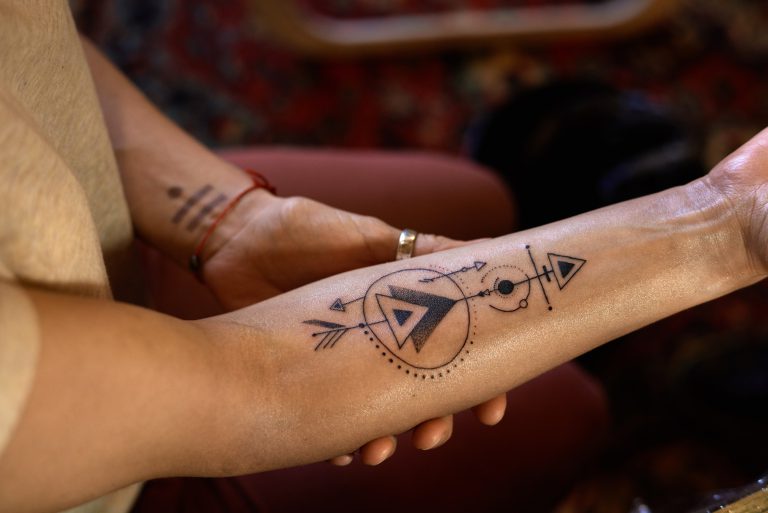For those considering laser tattoo removal, it is important to understand the ins and outs of this tattoo removal procedure. Modern tattoo removal lasers can be used to almost completely cover or erase tattoos, but there are various factors that influence its success.
This blog post looks at how exactly laser tattoo removal works, as well as information on cost considerations, pain management techniques, and more—everything you need to know about getting rid of your ink for good!
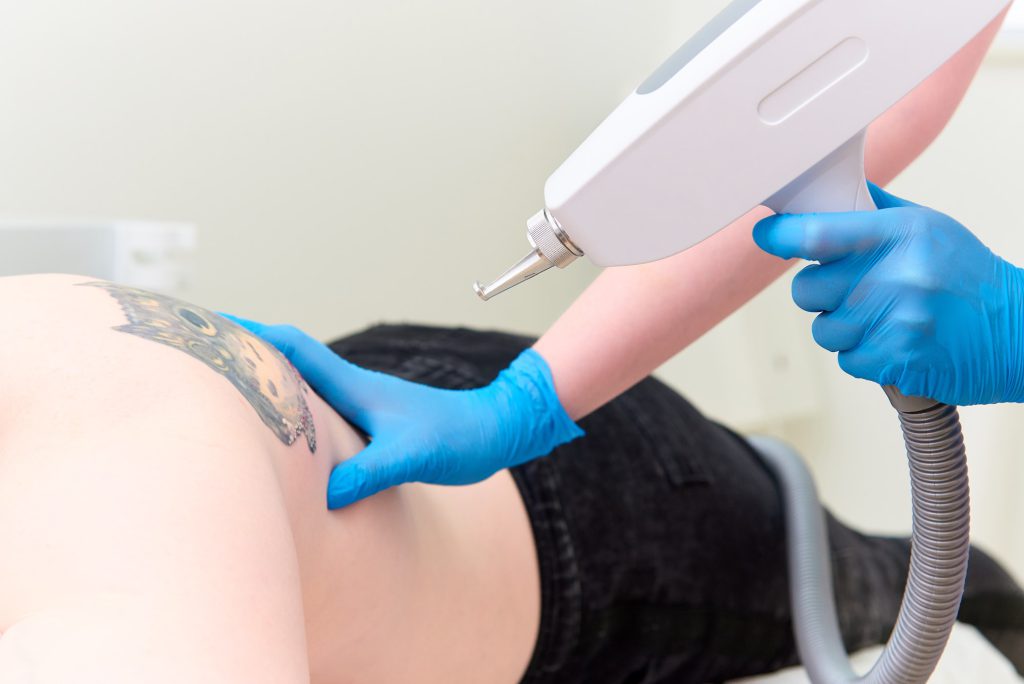
Key Takeaways
- Laser tattoo removal is the most reliable and efficient method of removing unwanted tattoos, with rapidly evolving technology offering increased safety and effectiveness.
- Different laser treatment technologies vary in their effectiveness for different skin tones. Size, location, and tattoo ink color also influence the success rate.
- Seeking a qualified professional and staying informed on developments are essential to ensure successful results with minimal risk.
Understanding Laser Tattoo Removal
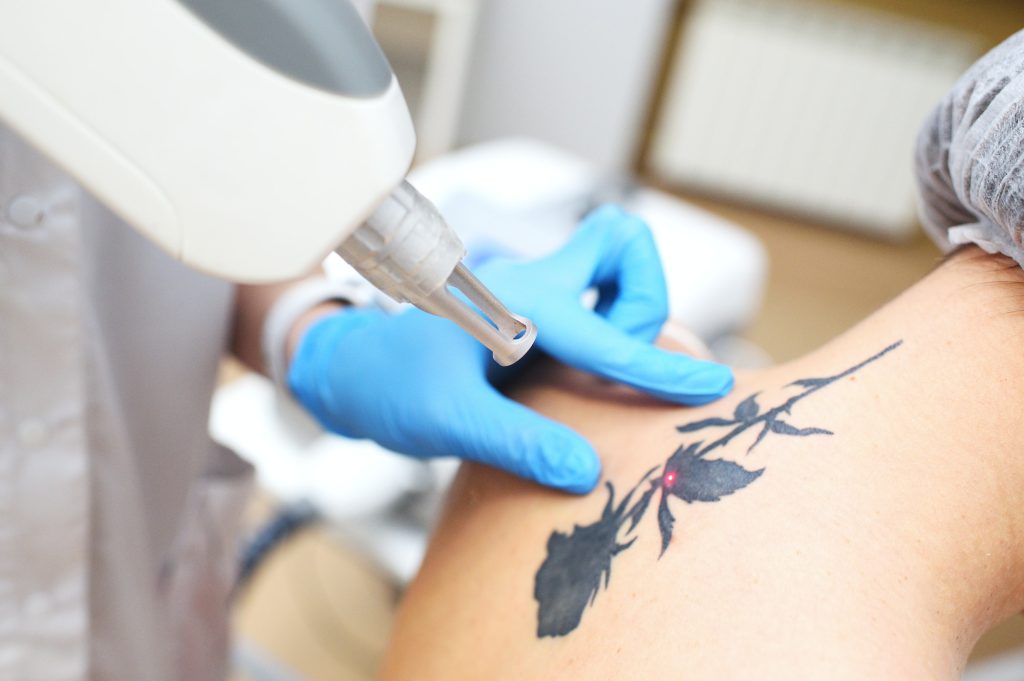
Laser tattoo removal, a procedure distinct from laser hair removal, has been established as the best approach for getting rid of tattoos, presenting a more reliable and successful alternative to other techniques like surgical excision or covering-up. The process consists of fragmenting tattoo ink particles on the skin by laser energy that is then eradicated naturally via the body’s immune system.
Numerous types of laser treatments are employed in these procedures, such as nanosecond and PicoSure lasers. Although it depends on different factors including the size, color, and body area to treat to determine how effective they will be at removing one’s initial tattoo. With traditional methods used for erasing unwanted artworks from our bodies, lasers have demonstrated their superiority over them all due to their success rate when treating these kinds of situations.
How Laser Tattoo Removal Works
To eliminate a tattoo, laser treatments use specific wavelengths to target the pigment of the tattoo ink. This absorption causes the ink particles to heat up and disintegrate into smaller fragments which are then recognized by the body’s immune system as foreign substances. Macrophages taking in these pieces contribute towards the fading away or full removal of tattoos over time after multiple sessions of laser treatment.
Types of Lasers for Tattoo Removal
When it comes to tattoo removal, lasers are the preferred method of treatment. The PicoSure laser, for example, offers effective results in fewer sessions when compared with other tattoo removal lasers, while working by targeting particular ink and pigment colors using different wavelengths. The ability to break down even stubborn pigments makes them a reliable choice for removing a wide array of tattoos along various pigment hues.
It is key that those considering laser technology stay up-to-date on its latest developments as this can have an impact on the success rate associated with their tattoo removal procedure.
Factors Influencing Tattoo Removal Success
When it comes to laser tattoo removal, there are significant differences between the latest technology and more traditional treatments. Picosecond lasers such as PicoSure and PicoWay have completely changed the game when it comes to removing tattoos, enabling these devices to obliterate ink particles faster while minimizing damage done to the surrounding tissue and skin tissues.
In order for successful results during a tattoo removal procedure, choosing an appropriate wavelength of laser light is important based on what type of color has been used, 1064 nm specifically works best against black pigments whereas 785 nm is usually applied for green hues. All this ties into how modern picosecond lasers make great strides towards effectively eliminating even hard-to-remove tattoos.
Safety Measures and Comfort During Treatment
When it comes to the safety and comfort of laser and tattoo removal treatments, people have many concerns. But, there is no need to worry – as long as treatment is done by a professional specialist in this field, there are usually no significant issues associated with the procedure. Common side effects like blisters and scabs may be experienced, but these cases tend not to occur frequently among patients. Pain tolerance during treatment will depend on one’s individual threshold. Nevertheless, pain management such as local or injectable anesthesia can help ensure maximum ease during each session.
Customizing Your Laser Tattoo Removal Experience

The efficiency of tattoo removal is determined by numerous aspects, including the size and placement of the inkwork, color, as well as the patient’s skin type and hue. In general, tattoos that are bigger require more sessions for a longer period compared to those with lesser surface area. The amount of tattoo ink applied plus how deep it lies in the top layer of skin also affects the final outcome significantly.
Tattoo Ink Color, Location, and Size
When it comes to the removal of tattoos, size is an important factor. Tattoos that are bigger in size can take more time to be eliminated as they possess a large amount of tattoo ink and could even have penetrated deeper into the skin layers. The place where the tattoo has been placed also matters when laser treatment is being applied since areas with greater lymph nodes or a higher concentration of blood cells may react differently.
Not only location, but color plays an essential role while removing a tattoo through lasers as darker colors like green, blue, and black tend to be easier targets compared to light shades such as white, yellow, or red because the black pigment absorbs the laser wavelengths and energy faster allowing for successful eradication from body parts. It’s pertinent that one takes all these factors into consideration prior to commencing their journey towards removal via laser surgery so satisfactory results are obtained quicker than expected!
Skin Type and Tone
The success of tattoo removal lasers greatly depends on the type and tone of skin. Usually, people with lighter skin types can get better results as it’s easier for lasers to target and remove ink without interference from melanin levels in darker skins which might require more sessions due to higher amounts of pigmentation present.
The Cost of Laser Tattoo Removal

The cost of laser and tattoo removal treatments can vary and depends on factors such as the size of the tattoo, location, color, and the number of treatments needed. On average, each session costs around $463, but this figure is subject to change depending on specifics. One should factor in expenses for items like aftercare products (i.e., ointments/bandages) or pain management options (numbing creams & cold air machines). It’s imperative that all associated expenditures are taken into consideration when considering tattoo removal to ensure tattoos are effectively treated with successful outcomes.
Average Cost per Session
The cost of a laser tattoo removal session will vary depending on the specifics—such as size, location, and color of tattoo ink. Darker hues are easier to remove than lighter shades, so they typically have lower costs associated with them. Likewise, bigger tattoos or those located in sensitive areas require more sessions and incur higher expenses accordingly. It is suggested that you consult an experienced professional for a detailed estimate regarding your own unique piece before undergoing any tattoo removal method. Laser-based tattoo eradication can be around $463 per visit, but this may change depending on the type, area, and coloring chosen when applying the artwork onto one’s body.
Additional Expenses
When budgeting for your laser tattoo removal process, it is important to factor in extra expenses such as numbing creams, cold air machines, and aftercare ointments or bandages. On average, these costs can range from $200 – 500 per session depending on the clinic’s laser energy methods and procedures employed for pain management during this type of treatment.
Keeping these add-ons within account prior to beginning a tattoo removal method may help avoid unexpected financial surprises along the way with regards to removing unwanted tattoos.
Pain Management During Laser Treatment
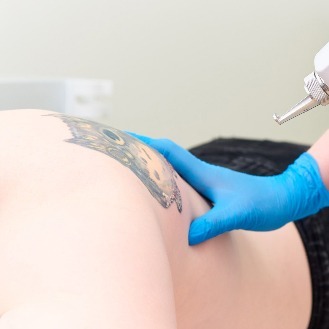
Many individuals can be hesitant about going through the tattoo removal process, especially because of potential pain. With proper measures for managing this discomfort, like using numbing cream and cold air techniques—which depend on an individual’s personal threshold—it is possible to reduce the level of pain felt during laser treatments. Being aware ahead of time of what sensations one may experience during this procedure as well as how to manage them makes getting a tattoo removed less daunting overall.
Numbing Creams and Cold Air

To make the laser tattoo removal work more comfortable and alleviate any associated anxiety, numbing creams like NumbSkin, HUSH, and Anesten can be used on the skin prior to treatment. During the laser tattoo removal procedure, a number of cold air devices such as Cryo Numb or Zimmer Cooling Device may also be employed which will provide cooling relief from pain in the affected area. Both these methods help ensure an easier experience for individuals getting their tattoos removed.
Personal Pain Threshold
Having a solid idea of your personal pain tolerance can be invaluable when planning out the effective tattoo removal process. Taking an over-the-counter medication prior to treatment, applying numbing creams, and using ice packs on the area are all proven methods for decreasing discomfort while erasing unwanted tattoos. By familiarizing yourself with these techniques before starting any other tattoo removal methods, you’ll have better control of managing how much distress you may experience during each session.
Being mindful of your own sensitivity towards pain is essential in ensuring that getting rid of undesired ink will remain as comfortable an endeavor as possible without compromising quality results.
Preparing for Your Tattoo Removal Journey

For a successful laser tattoo removal experience, it is essential to make the necessary preparations. Scheduling appointments with suitable intervals and following aftercare instructions are paramount for optimal results. Usually, 6-8 weeks between treatments allow time for adequate tattoo ink dissipation and the body’s ability to heal. It is also important to use the right products post-treatment and abstain from sun exposure throughout your journey in order to ensure that everything goes smoothly during the laser treatments of your tattoo(s).
Scheduling Appointments
Tattoos can take multiple treatments for complete removal, based on factors such as size and color of the tattoo, age, and location. It is suggested to seek consultation from a professional specialist in order to decide which tattoo removal methods work best for your individual case. For optimal results, it’s recommended that appointments be scheduled 6-8 weeks apart. This allows skin time to heal between sessions, ensuring an effective tattoo removal process. With careful planning of each appointment, you are able to give yourself a smooth route towards successful treatment completion!
Aftercare Tips
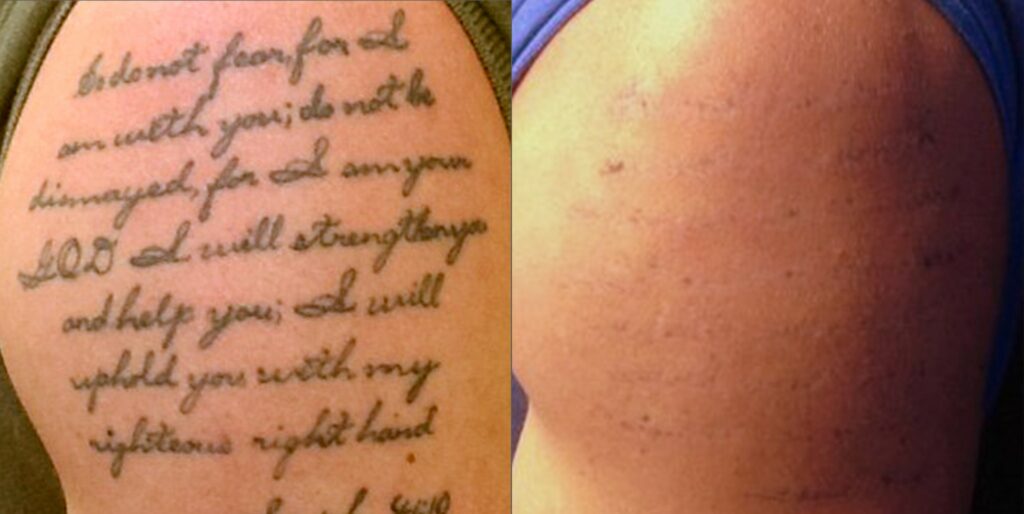
To ensure a successful laser tattoo removal experience and minimal risks or complications, it is critical to adhere to an appropriate aftercare regimen. To aid in the healing process of treated areas, apply moisturizers like Aquaphor as well as protective bandages and comfortable clothing for at least 6 weeks. It’s also important that you keep this treated area well shielded from direct sun exposure by utilizing sun protection when necessary. Following these instructions can promote proper healing while maximizing your chances of achieving desirable results with your laser tattoo removal journey overall.
Risks and Limitations of Laser Treatments

When it comes to laser tattoo removal treatments, safety and effectiveness should be considered. There is the potential for it to leave scarring and discoloration of skin if incorrect techniques are used or in cases where the healing process does not go as planned. While complete laser tattoo removal work may be impossible due to traces of tattoo pigment remaining behind, a proficient tattoo remover can help reduce risks while providing desired results from this procedure. By sticking with experienced professionals regarding your own laser tattoo removal work, you will have more chances at attaining success through this type of treatment approach.
Scarring and Skin Discoloration
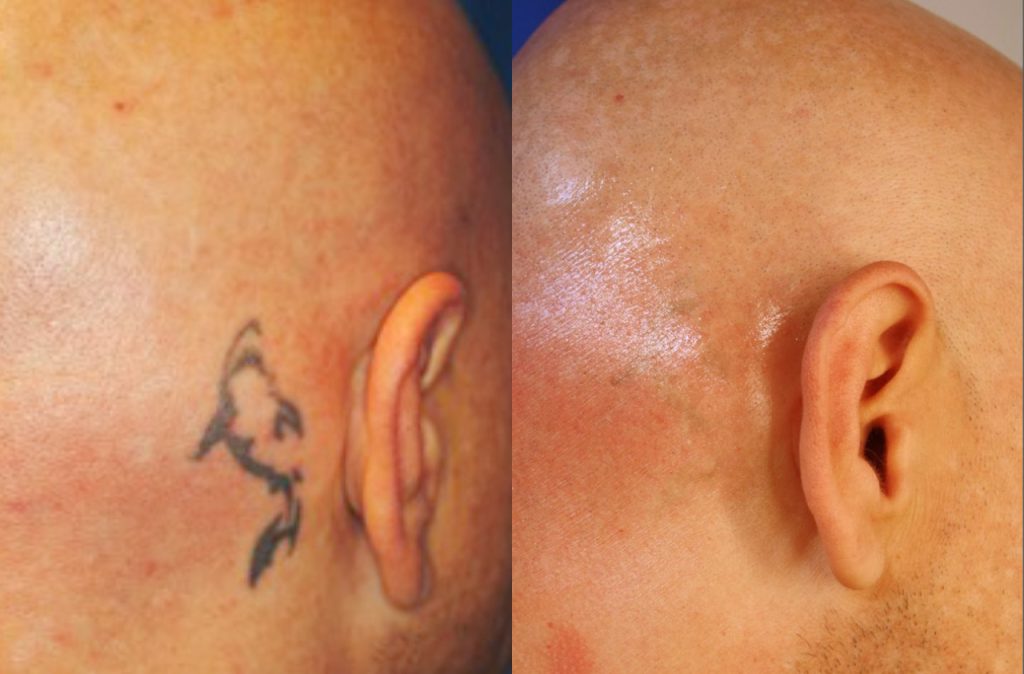
When using tattoo lasers to remove a tattoo, the healing process can sometimes lead to skin scarring or discoloration. Pinpoint bleeding, blisters, and scabs could all cause permanent marks if not handled carefully throughout the removal process. Fortunately, any discolorations are typically short-lived and should resolve themselves in due course as long as aftercare instructions given by professional staff at your chosen laser clinic are followed properly. Scarring on occasion may be an unwanted consequence of removing a tattoo with lasers, but it isn’t something that’s seen often during this type of procedure.
Incomplete Removal

When attempting to remove a tattoo, one must be mindful of the depth at which ink particles are injected into the skin. Tattoo colors in certain shades such as green and blue tend to have more difficulty being completely removed from underneath its surface compared with lighter colors like yellows, whites, turquoise, or purples.
It is important for anyone undergoing tattoo removal treatments to keep realistic expectations about their results; complete tattoo removal may not always be possible due to these color differences and variations between individual tattoos. Nevertheless, understanding this fact can allow individuals embarking on this journey to feel informed when making decisions regarding other tattoo removal methods available.
Alternatives to Laser Tattoo Removal And Why They Are Not Great

For those looking to get rid of tattoos, laser tattoo removal is usually the best choice. This tattoo removal method has fewer risks compared to other tattoo removal methods such as surgical tattoo removal or a cover-up tattoo. With surgical procedures, there may be scars left behind and utilizing another technique could not completely hide the original artwork, while lasers can do away with it without as much risk.
Surgical Removal

The use of a scalpel to surgically extract the skin containing an unwanted tattoo is much more invasive than using laser tattoo removal work, and may involve discomfort as well as scarring. The healing period for this type of procedure usually takes around two weeks with the mark gradually fading over 2-3 months afterward.
Given these potential risks and a longer recovery time when compared to its counterpart (laser tattoo removal), surgical treatment may not be suitable for everyone who desires their ink removed.
Cover-Up Tattoos

For those looking for a more permanent and thorough solution to removing an unwanted tattoo, laser tattoo removal is the preferable choice compared to cover-up tattoos or even laser hair removal which addresses something else. But how exactly does this process work? Laser tattoo removal utilizes lasers with very specific energy output in order to break down ink particles within the skin so they can be absorbed by our own body’s natural healing system over time, ultimately erasing it from sight. While there are limitations as far as what a cover-up tattoo can actually conceal of any existing design, these might not always provide satisfactory results that last and require additional effort plus cost during its application.
The Importance Of Choosing The Right Professional For Tattoo Removal Treatments
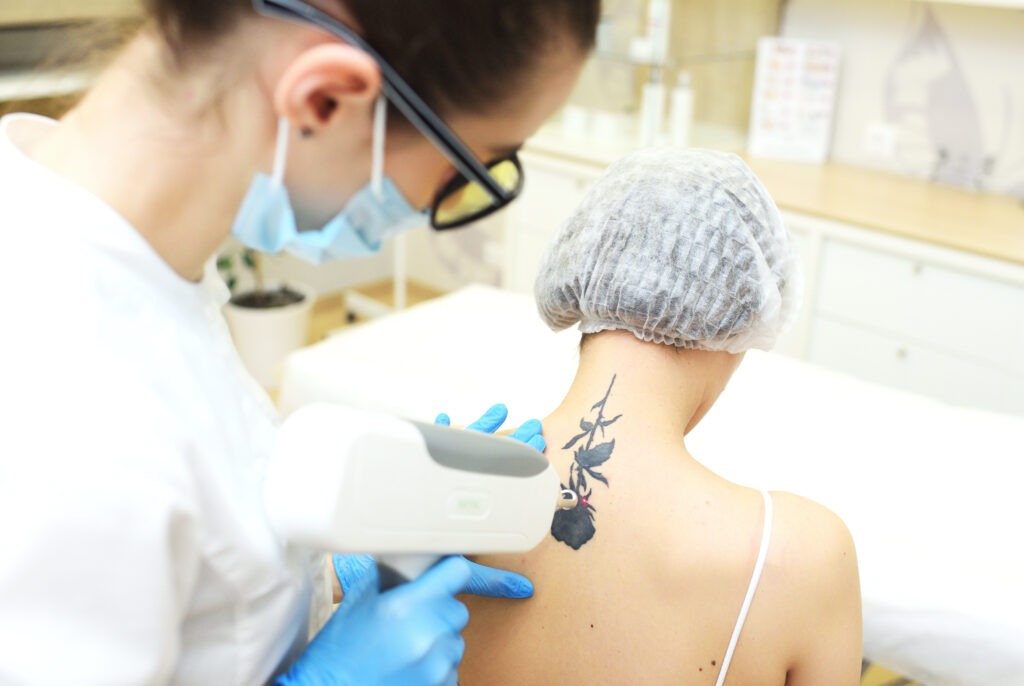
For a successful and safe experience with tattoo removal treatments, it is necessary to pick the right professional. With expertise in using medical lasers for removing tattoos, they can minimize any risks as well as achieve desirable results. A reputable, laser hair removal clinic will have professionals skilled in directing the high-intensity light beam to break down ink particles without damaging the surrounding tissue.
By choosing someone who has lots of expertise within the industry, you get peace of mind knowing that all aspects connected with tattoos being removed via lasers will go smoothly, guaranteeing optimal results throughout!
Experience of Experts in Laser Clinics
It is essential to select an experienced and knowledgeable professional if you are embarking on your journey of tattoo removal treatments. They have familiarity with laser technology, allowing them to configure it for the optimum outcome based on details such as the initial tattoo, color, and location of a given tattoo. Such experts also comprehend how skin tone can respond differently when exposed to this type of laser treatment, so they know what potential side effects or issues may arise along the way. Plus, their background in successful removals provides reassurance that your desired results will be achieved, often with fewer treatments.
In conclusion, by choosing someone who has lots of expertise within the industry, you get peace of mind knowing that all aspects connected with tattoos being removed via lasers will go smoothly, guaranteeing optimal results throughout!
Not All Laser Technology Is The Same
Laser tattoo removal is ever-evolving, and advancements in the technology are making it much more successful while reducing potential risks. Staying up to date with these recent developments can help ensure a satisfactory outcome of your individual process. The choices for safe, effective ink erasure have improved thanks to technological progress, meaning those who want their tattoos removed now find it easier than before, often requiring only a few treatments even for multicolored tattoos.
Laser Tattoo Technology is Always Changing and Evolving
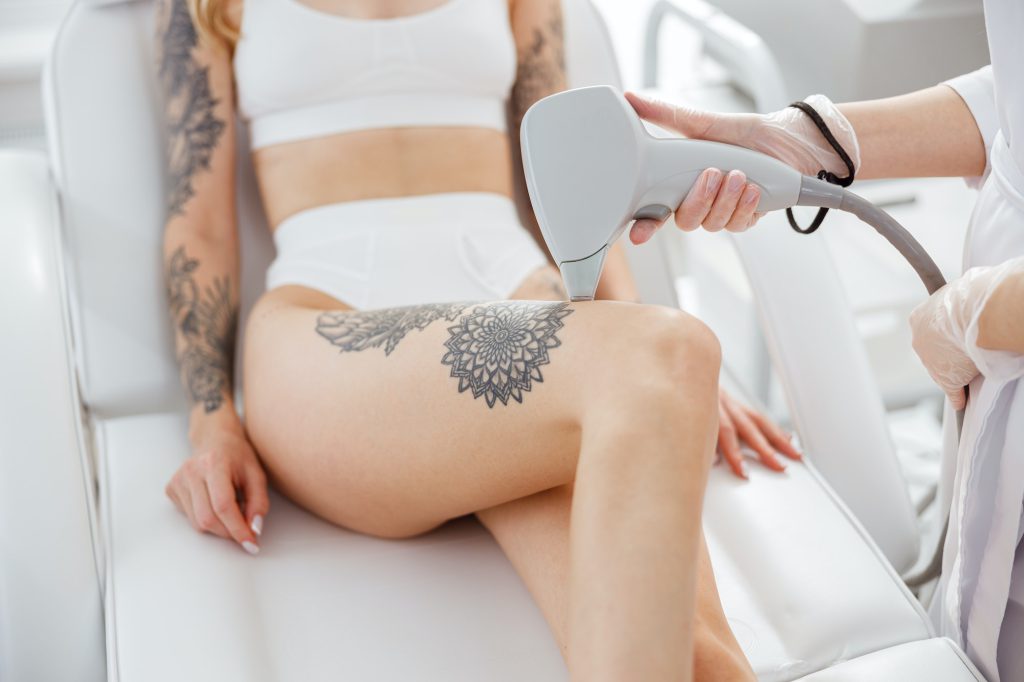
Newer laser technologies such as fractional and picosecond lasers have been shown to be much more accurate than older methods like nanosecond ones, offering improved targeting of the ink particles with minimal damage done to the surrounding tissue and skin. This makes it a safer and faster procedure overall, capable of effectively treating a variety of tattoo types.
In order for you to get the best outcome when undergoing laser tattoo removal treatment, it is recommended that you find a free consultation with an expert who specializes in using these updated approaches. Keeping up-to-date on recent advancements can help guarantee better results from your tattoo’s removal process.
How Popular Is Tattoo Removal in Edmonton, AB, and the Greater Area Including Sherwood Park, AB
Due to the increasing efficiency of laser tattoo removal treatments, a rising number of individuals in and around Edmonton, including Sherwood Park AB, are opting for this service. At Fading Regrets, we offer laser treatments for tattoo removals.
Summary
Laser tattoo removal is a safe and effective way to bid farewell to an undesirable new or unwanted tattoo, or older ink. Different components such as size, location, color of the dye used for the tattoo, and skin tone must be taken into consideration before undergoing this procedure in order to guarantee successful results with minimal side effects thanks to advancements made through technology. Selecting a professional experienced in laser treatments will help ensure that you have access to all necessary information needed prior to erasing your unwanted tattoos so you can make sure they are effectively treated from your body’s surface area.
Frequently Asked Questions About Tattoo Removal
As we have covered several important elements in this blog post, many individuals commonly ask questions about laser tattoo removal treatments. To inform and assist those thinking of undergoing the procedure, here is a list with the top 20 most frequently asked questions regarding how many treatments are needed, as well as cost and pain management. From expected results to understanding what takes place during the treatment process involving lasers specifically for tattoos, everything you need to know has been included here.
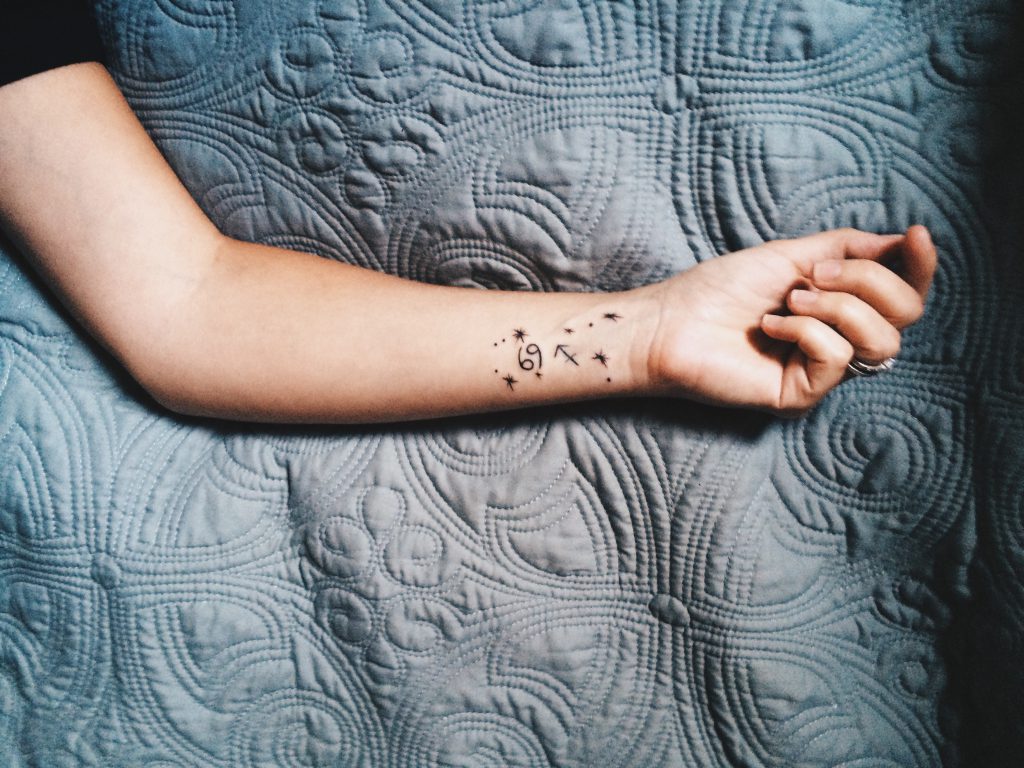
Yes, most laser clinics have the technology to target and break down tattoo colors across the spectrum, but some colors like blues and greens may require more sessions healing of surrounding tissue.
Yes, skin tone can influence the number of treatments needed. Lighter skin tones may require fewer treatments because the laser can more easily distinguish the ink from the skin.
The number of treatments needed varies, but on average, most patients will need 3 to 8, depending on the size, color, and age of the tattoo.
The treated area of skin may be sensitive post-treatment, but following aftercare instructions reduces the risk of infection.
Colored ink can be removed, although some colors may be more stubborn. Techniques like the PicoSure laser are effective at targeting a wide range of ink colors.
Fading Regrets offers a free consultation to discuss your specific needs and evaluate the tattoo you want removed.
Numbing cream can be applied to the skin to minimize discomfort during the procedure, and most clinics offer it as an option.
Full removal is possible in many cases, but factors like ink depth and tattoo age can affect the outcome.
While you may notice a lightening of the ink, being extremely happy with the results typically requires multiple treatments and the fully healing of surrounding tissue.
Remember, these answers are general guidelines. For personalized advice and consultation, it’s best to schedule a consultation with a professional at a laser clinic to discuss your specific tattoo and treatment plan.



